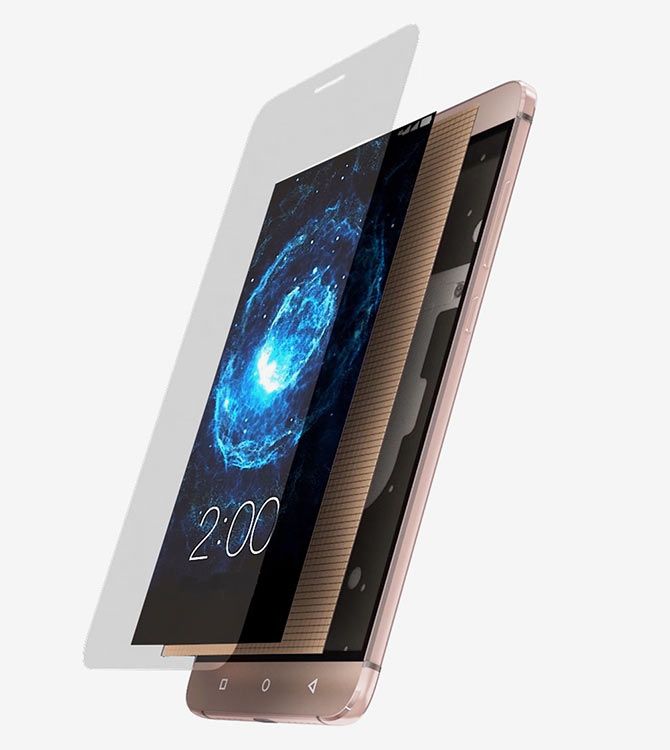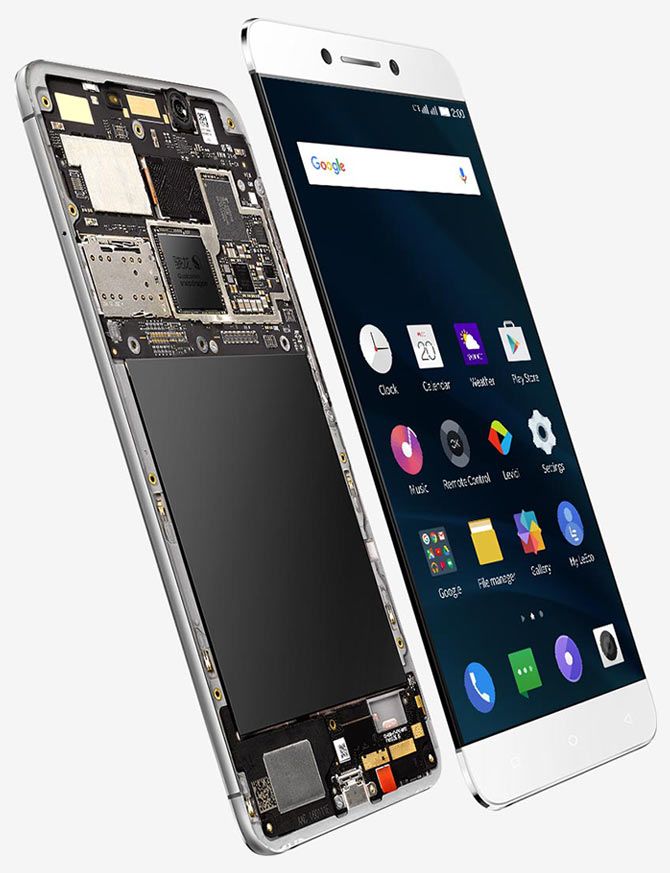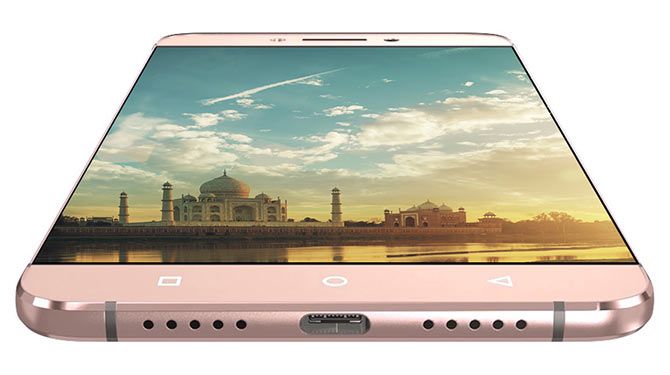Himanshu Juneja reviews the latest flagship from Chinese company LeEco

Despite being a new entrant in the mobile phone market, LeEco has been quite busy. From being previously known as LeTV, to launching some well received handsets within a span of six months, LeEco has been showing signs of grinding it out amid cut throat competition. Le Max and Le 1s handsets allowed the unknown company to find its own set of admirers.
It is not that the firm hasn't had hiccups along the way. The company's inexperience showed when they priced the first of the handsets a bit too exorbitantly. This time LeEco seems determined not to repeat the mistake, and having brought forward mobile phones with top of the line hardware, the move should go a long way.
How much has LeEco learnt from their past mistakes, and exactly how capable is the Le Max 2? We take a closer look to find out the answers to these relevant questions.
Construction
People acquainted with LeEco's line up would be able to spot the familiarity between the Le Max 2 and its predecessor. But then, the candy bar phones these days have very little to distinguish between from. An all metal construct, the phone measures 156.8 x 77.6 x 8 mm in dimension. It is quite heavy at 185 gms too. Despite the chamfered edges, the handset has managed some sharp edges, thanks to the display unit not being level with the metal body.
Looking at the right edge, one finds the power and volume buttons. The top edge has the infrared emitter. The Nano SIM card slot is located on the left side. Lastly, the speaker, microphone and the USB Type C port are located on the bottom edge of the phone.
Turn the phone around, and one finds the camera module jutting out quite a bit. This was concerning as one will have to entertain the thought of putting up a mobile phone case surely. The slippery nature of the body and the imminent damage to the camera bezel is something hard to be ignored. The fingerprint scanner is situated right beneath the camera. LeEco has implemented Qualcomm's Sense ID. This technology uses ultrasonic mapping technique to register the fingerprints.
The antenna lines should have lifted the aesthetic value of the phone, but both are not flush with the metal body. Both being recessed probably are complimentary to the raised screen upfront. LeEco's team definitely slipped quite a bit with the final design.
Display

As the name suggested upfront, the display had to be in the phablet category. The 5.7-inch screen firmly puts the phone in that category. The Quad HD display comes with a resolution of 1440 x 2560p, which results in a pixel density of 515 ppi. The sharpness is there, and the brightness level too is good for sunlight legibility. The colours rendered are natural than overtly saturated.
Despite being an IPS variant, the viewing angles are just about good. While this is odd and surprising to see, the LTPS (Low Temperature Polycrystalline Silicon) technology makes sure that the battery is not bearing the full brunt. A thoughtful addition by LeEco and dare we say, a good inclusion to mitigate the blow of passable viewing angle prowess.
Specs
With Snapdragon 820 SoC residing inside, the handset has Quadcore processing prowess. The set up comprises of Dualcore Kryo (2.15 GHz) and an another Dualcore Kryo (1.6 GHz). While Adreno 530 takes care of the graphics, buyers can pick up either the 6 GB RAM or the 4GB RAM model.
The former comes with 64 GB on board storage, while the latter sports 32 GB.
LeEco unfortunately decided against the inclusion of a memory card slot, so the buyers will have to choose carefully.
LeEco's claim to fame with this handset is the Continuous Digital Lossless Audio. The company's very own technology makes use of the Type C port combined with the DAC loaded headphones, providing high quality sound output. The headphones, if bought separately, cost Rs 1999.
Connectivity

The 4G enabled device here is carrying features like WiFi (b/g/n/ac), Bluetooth (ver 4.2), and GPS. While USB OTG and infra red emitter are a good boost to the specs, missing out on FM radio and NFC may rankle with some.
Going ahead with USB Type C port surely has given the Le Max 2 future proofing and bragging rights, and the ability to go ahead with the CDLA technology. More on that later.
Software
Le Max 2 runs on Android Marshmallow as the base OS, while sporting the EUI skin (ver 5.6) on top. Here is an attempt from LeEco to provide users with stock Android features, while improving a little bit by including some personal touches. There are shades of iOS here, the single layer OS, and the notification badge to denote the number of alerts received for a particular app. That said, Android fans will not feel left out either.
The toggle switches are accessed via app switching screen, the drop down menu provides the users with notification management, while the presence of essential features like Google Now on tap will make previous Android users feel comfortable. Multitasking menu though has been given the further task of acting as the quick access menu as well.
Something to rejoice for the users who love to customise -- they get the advantage to customise their precious little handset with themes of choice right out of the box.
LeView is the company's take on bringing up curated Youtube content. One has to swipe right on the screen to gain access, much like HTC BlinkFeed. This feature can be disabled as well. There are some bundled apps included, like Yahoo weather, IR remote controller, etc, but along with LeView, the LeTV app will entice the consumer a lot. The latter is pretty much like a TV channel on the go. Users will get free access to LeEco's premium membership for one year, which costs about Rs 4,900.
With smooth animations and fluid performance, LeEco has tried to give a no-nonsense experience to the users. But it was odd to notice that there are still some Chinese text in the menus. Hopefully, the next OS update will remove these anomalies.
Performance
Le Max 2 performs admirably while going about with the day to day tasks and there were no real stutters. The apps launched smoothly, and same was the case with multitasking. The animations are nothing fancy and they too have buttery smoothness to them. The temperature were well within the acceptable mark, and the handset only got a bit warm.
However, things are not flawless here. There was an odd case of things getting stalled for few seconds. These were very few, but seems like the software still needs a bit of polishing. The fingerprint scanner takes a good second to recognise the user digits, and seems that maybe the new ultrasonic technology is still rough around the edges. There is no shortage of raw power underneath the hood.
Coming to the audio department, the CDLA technology offers some very impressive output. The mids and highs have a good fidelity, but the bass is not as punchier as should be. FLAC audio especially sounds distinctively good. How many users actually possess such files, is anybody's guess. The lack of compatible headsets will be an issue for a considerable time it seems.
Should the user choose something stock, the audio via the adopter is not bad either. The mono speaker is decent.
Camera

The main camera unit on the Le Max 2 carries a 21 MP sensor, complete with its own Optical Image Stabilisation, phase detected autofocus. The front snapper is an 8 MP affair.
There are some good shooting modes on offer in the camera app. The lack of a Pro mode is a serious offense and will not go overlooked. The settings menu still allows tinkering of the ISO and exposure levels. One can also tweak white balance around.
The PDAF was quick when called in action, and the rear camera captured good details in the photographs. The noise was kept down, and the colours looked natural rather than punchy. OIS came to the rescue repeatedly, as there was a noticeable lag in the shutter speed. Night time photography naturally had noise creeping in, with the software struggling to keep the grains away. Thankfully, the result were not horrible and can be shared around.
Thanks to top line hardware, the handset is capable of capturing 4K videos. The videos were pretty good, and the same was true for the 1080p results as well. Users will not feel shortchanged with the quality of the videos.
The front facing camera grabbed very decent selfies.
Battery
The non-removable 3100 mAh battery pack inside the Le Max 2 sounded just about right to power up this behemoth. And the performance was not disappointing.
The users will be able to pull the handset through to a complete day's usage on medium to high usage pattern. The handset supports Qualcomm Quick Charge 2.0 standard, so juicing up the phone becomes a bit easier.
Verdict

The 6GB RAM/64GB storage model has been priced at Rs 29,999, while the 4GB RAM/32GB storage model comes with a price tag of Rs 22,999. The lower end model gives the prospective buyers a fantastic opportunity to get their hands on a handset carrying the flagship 820 SoC. The configuration is already good enough, and the free subscription of the LeEco's premium membership for a full year makes it a pretty good deal.
Le Max 2's top model however has a competition from the more revered OnePlus 3. There is also the flash sale hassle which needs to be taken into account. Combine that with the unpolished software, passable built quality, and laggy fingerprint scanner, it is inevitable that LeEco's top end model will have its deficiencies brutally exposed. The higher end model should be brought to the Rs 25,000 mark to combat the current reigning favourite OnePlus3, and LeEco should bring in the price cut before it is too late.









